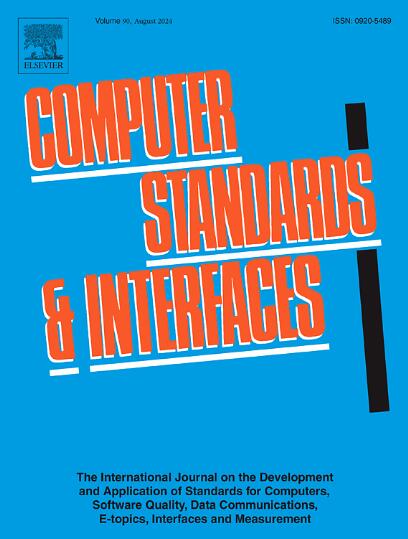Logarithmic identity-based ring signature over lattices and linkable variant
IF 3.1
2区 计算机科学
Q1 COMPUTER SCIENCE, HARDWARE & ARCHITECTURE
引用次数: 0
Abstract
The ring signature is extensively utilized in many fields, including e-voting, cryptocurrency, blockchain settings, etc. This paper proposes an effective identity-based ring signature (IBRS) from the lattice assumption by using logarithmic size OR proofs of group action to make the ring signature able to cope with the challenges of quantum attacks. Our construction has been proven anonymous and unforgeable in the random oracle model (ROM) under the hardness of Module Small Integer Solution (MSIS) assumption from lattices, a hot quantum-resistant cryptographic primitive. The anonymity makes it possible for a signer to sign the same message twice or more without being detected by the verifier. This would bring repeated e-voting or double spending of the same money in blockchain. Therefore, as an additional work, we give a linkable variant. Compared with existing IBRS schemes with linear sizes, the size of our scheme is relatively short and achieves logarithmic communication cost with its ring scale . Our research data show that the signature size of our proposal has significant advantages over several existing schemes with an increase of . When the ring scale is set to be 32 (512, resp.), our scheme has a signature size of 177.13KiB (179.75KiB, resp.), while the previous scheme has a size of at least 154.06KiB (2695.74KiB, resp.).
格上基于对数恒等的环签名及其可连接变分
环签名广泛应用于电子投票、加密货币、区块链设置等领域。本文从格假设出发,利用群作用的对数大小或证明,提出了一种有效的基于身份的环签名(IBRS),使环签名能够应对量子攻击的挑战。在模小整数解(MSIS)假设的硬度下,我们的构造在随机oracle模型(ROM)中被证明是匿名的和不可伪造的。匿名性使签名者可以在不被验证者检测到的情况下对同一消息签名两次或更多次。这将带来重复的电子投票或在b区块链中重复花费相同的钱。因此,作为一个额外的工作,我们给出了一个可链接的变体。与线性尺寸与现有IBRS方案相比,我们的计划是相对较短的大小和规模达到对数沟通成本及其环N我们的研究数据表明,我们的建议的签名大小显著的优势,超过了现有方案规模环时增加N . N将32(512年,职责。),我们计划有一个签名的大小177.13简约(179.75简约,职责。),而先前的计划规模至少154.06简约(2695.74简约,职责)。
本文章由计算机程序翻译,如有差异,请以英文原文为准。
求助全文
约1分钟内获得全文
求助全文
来源期刊

Computer Standards & Interfaces
工程技术-计算机:软件工程
CiteScore
11.90
自引率
16.00%
发文量
67
审稿时长
6 months
期刊介绍:
The quality of software, well-defined interfaces (hardware and software), the process of digitalisation, and accepted standards in these fields are essential for building and exploiting complex computing, communication, multimedia and measuring systems. Standards can simplify the design and construction of individual hardware and software components and help to ensure satisfactory interworking.
Computer Standards & Interfaces is an international journal dealing specifically with these topics.
The journal
• Provides information about activities and progress on the definition of computer standards, software quality, interfaces and methods, at national, European and international levels
• Publishes critical comments on standards and standards activities
• Disseminates user''s experiences and case studies in the application and exploitation of established or emerging standards, interfaces and methods
• Offers a forum for discussion on actual projects, standards, interfaces and methods by recognised experts
• Stimulates relevant research by providing a specialised refereed medium.
 求助内容:
求助内容: 应助结果提醒方式:
应助结果提醒方式:


